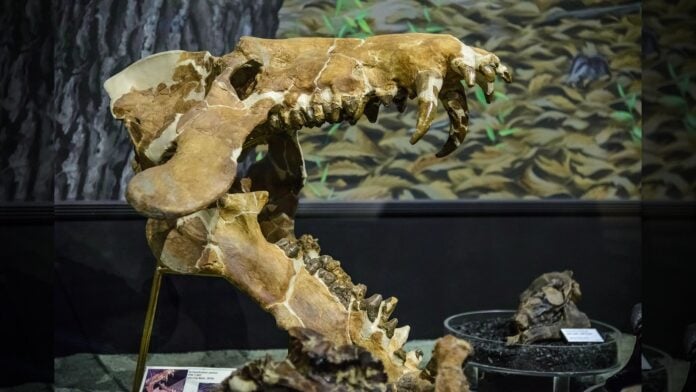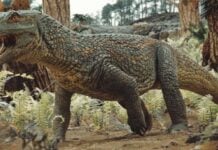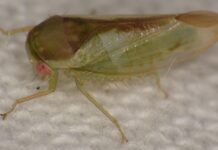Imagine a pig the size of a small car, capable of crushing bones with its powerful jaws—that was the reality for North America around 30 million years ago. These formidable creatures, known as Archaeotherium (meaning “ancient beast”), were more closely related to whales and hippos than pigs despite their piggy appearance. Now, a new study sheds light on how these prehistoric behemoths, which could weigh over 2,000 pounds, dined on their environment.
Contrary to previous assumptions that all Archaeotherium species had similar diets, researchers found evidence of distinct feeding strategies based on size. By analyzing the microscopic wear patterns on fossilized teeth using advanced microscopy techniques, scientists discovered a clear difference between the larger and smaller members of this prehistoric group.
The larger Archaeotherium displayed tooth wear remarkably similar to that of carnivores like lions and hyenas—indicative of bone-crushing abilities. This suggests they were likely powerful scavengers or even hunters who might have stolen carcasses from other predators, thanks to their imposing size. Smaller Archaeotherium, however, showed patterns consistent with a diet rich in softer materials like leaves, grasses, and perhaps even flesh.
This dietary variation paints a more nuanced picture of these ancient animals’ roles in the ecosystem. The smaller species likely acted as grazers or browsers, while the larger ones might have specialized in scavenging and potentially even hunting.
“It’s really interesting that the large ones are capable of crunching bones,” said Larisa DeSantis, an associate professor at Vanderbilt University and co-author of the study. “The small ones are not.”
While Archaeotherium possessed powerful jaws and teeth capable of inflicting fearsome bites, their brains were comparatively tiny—about the size you’d expect in a reptile, according to Wooten. This stark contrast between formidable physique and limited intelligence adds another layer to our understanding of these unusual creatures.
This exciting research continues to unravel the mysteries surrounding Archaeotherium, revealing them not as uniform grazing animals, but as complex players in the ancient North American food web. Further studies promise to refine our understanding of their behavior and ecological niche, shedding even more light on this intriguing group from a distant past.





























